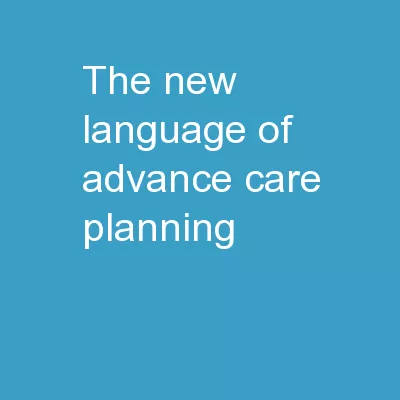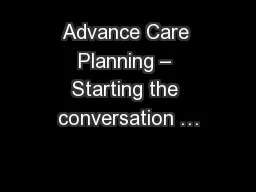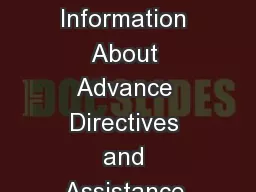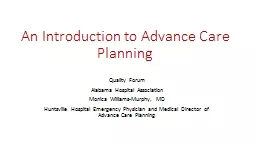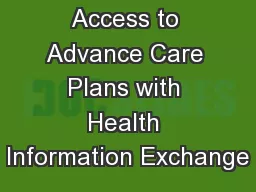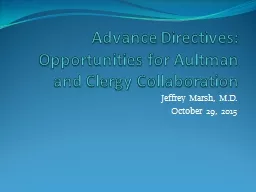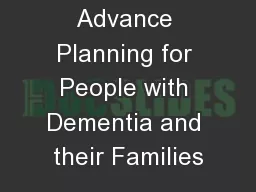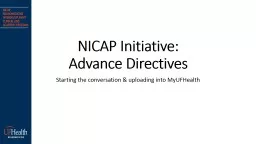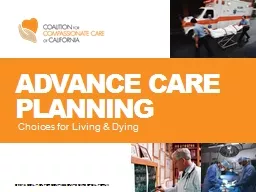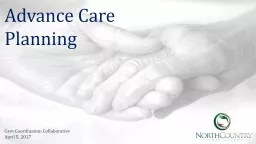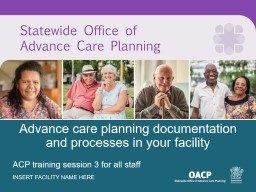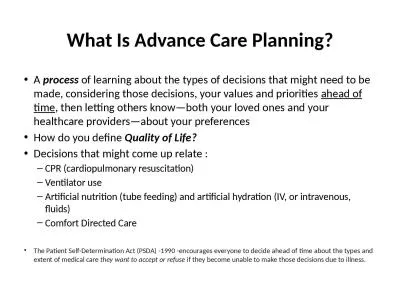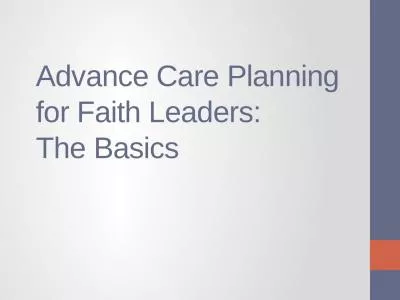PPT-The New Language of Advance Care Planning
Author : pamella-moone | Published Date : 2018-12-24
John Maycroft MPP Optum Jennifer Draklellis MBA Justin Altum BA Leemor Nir BA Monica Nolasco Jonathan Suber MBA UnitedHealth Care maslansky partners AARP
Presentation Embed Code
Download Presentation
Download Presentation The PPT/PDF document "The New Language of Advance Care Planni..." is the property of its rightful owner. Permission is granted to download and print the materials on this website for personal, non-commercial use only, and to display it on your personal computer provided you do not modify the materials and that you retain all copyright notices contained in the materials. By downloading content from our website, you accept the terms of this agreement.
The New Language of Advance Care Planning: Transcript
Download Rules Of Document
"The New Language of Advance Care Planning"The content belongs to its owner. You may download and print it for personal use, without modification, and keep all copyright notices. By downloading, you agree to these terms.
Related Documents

